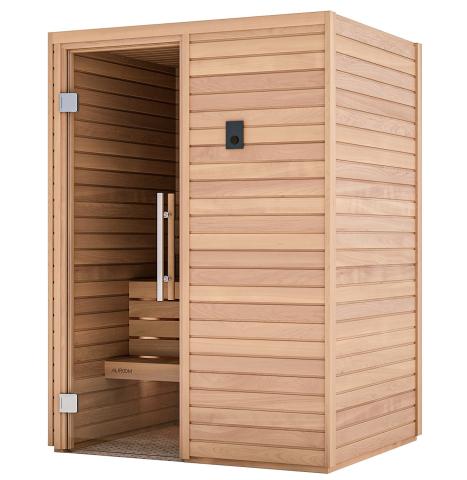The Facts About Traditional Sauna Revealed
The Facts About Traditional Sauna Revealed
Blog Article
Traditional Sauna for Beginners
Table of ContentsThe 5-Minute Rule for Traditional SaunaThe Best Guide To Traditional SaunaThe Buzz on Traditional Sauna4 Simple Techniques For Traditional SaunaWhat Does Traditional Sauna Do?
A lot of the weight lost in a sauna is water loss and is re-gained upon rehydrating. Without a doubt sauna can be an important component of a healthy weight loss program. To take a look at the distinctions between typical and IR saunas, I will certainly separate these into verifiable, theoretical, and made differences.Therefore, the best factor in the saunawhich is at the ceiling straight over the sauna heateris commonly between 185 and 190 F. Claims that a traditional sauna goes beyond 200 F is simply not real and not suitable for electrical saunas offered in the US. The temperature for a far-infrared sauna is usually established in between 120 and 140 F; nonetheless, unlike the traditional sauna, the goal in and IR area is not to achieve a heat.
Due to the fact that of this, the temperature difference is almost pointless, because profuse sweating causes both sauna types, but the technique of warming the body is different. In an IR sauna the bather will really feel warm and will certainly sweat a lot, but at much lower temperatures (Traditional Sauna). Hence, if the goal is to invest longer time periods in the sauna, the IR sauna is a good choice
When a standard sauna has been properly warmed, the sauna wall surfaces are warm, the air temperature has actually achieved established temperature level and the rocks are extremely warmed. As an interesting side note, the warmed walls and the rocks are discharging far-infrared warmth, integrated with the heated air, to create an "enveloping warmth".
Top Guidelines Of Traditional Sauna

When the heat is achieved, the components cycle on and off to preserve the high temperature level. Most traditional sauna users enjoy pouring water over the rocks to produce vapor to elevate sauna moisture degrees. The benefits of putting water over the rocks include: making the area much more comfortable, dampening the nasal flows, and permitting the usage of aromatherapy by blending vital oils with the water.

When the energy goes into the body, it creates the body temperature to enhance and eventually leads to perspiration. In an infrared sauna it is essential for the emitters/heaters to stay on nearly constantly. Considering that there is no mass of rocks to retain heat, the sauna read this will cool down if the emitters shut off.
As discussed above, the sauna bather in an infrared area desires to position himself in front of running emitters to obtain maximum take advantage of the warm. The heating time for the 2 spaces can be extremely various, depending on just how the spaces are made use of. For a traditional sauna, a bather must enable 30-40 mins for the area to attain a wanted temperature level and to correctly pre-heat the rocks.
See This Report about Traditional Sauna
A well built sauna will generally attain a temperature level of 150-160 F in about 30-40 mins. For hotter temperatures, the room might need to warmth for a longer duration.

Standard saunas tend to be bigger (therefore use more electrical power) than infrared saunas, although typical saunas are certainly readily available in one and 2 person dimensions. For a two-person conventional sauna, 5x6 or 5x7 dimension is most popular. The top bench can pleasantly seat 2 or three individuals and is additionally long enough to rest during the sauna session.
9 Easy Facts About Traditional Sauna Shown
The average expense per kWH of electrical power in the U.S. is about $0.11, so a 4.5 kW heating unit will certainly cost around $.50 to run for one hour, if the heating system runs constantly for one hour. Usually a sauna heater will compete 75% of the first hour and 50% of subsequent hours on considering that the elements cycle once the established temperature level is accomplished.

There is a seldom gone over difference in the social experience between the two areas. While our official website culture has lost a few of the social advantage of the conventional sauna experience, it can be extremely socially satisfying (Traditional Sauna). From family time in the sauna, see this website to heart-felt conversations with loved ones, to sauna partiesthe conventional sauna experience can cause intimate mingling
The Best Strategy To Use For Traditional Sauna
A lot of greater end infrared spaces consist of colored light therapy, noise systems and full-glass fronts.
Report this page